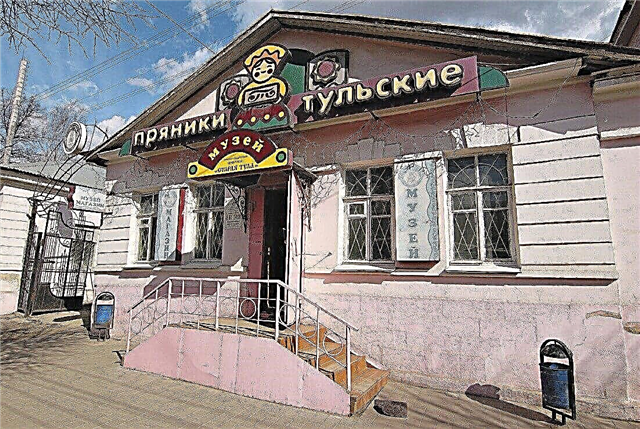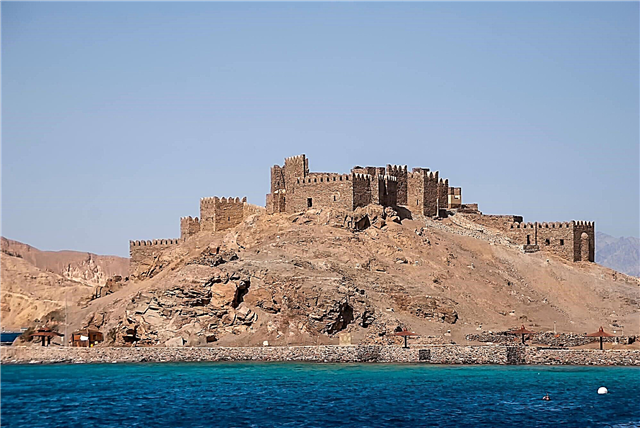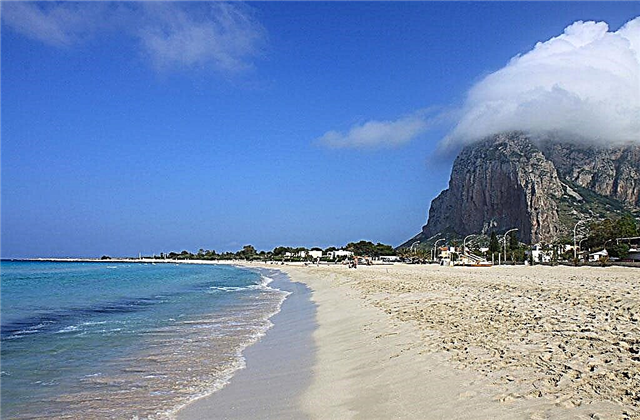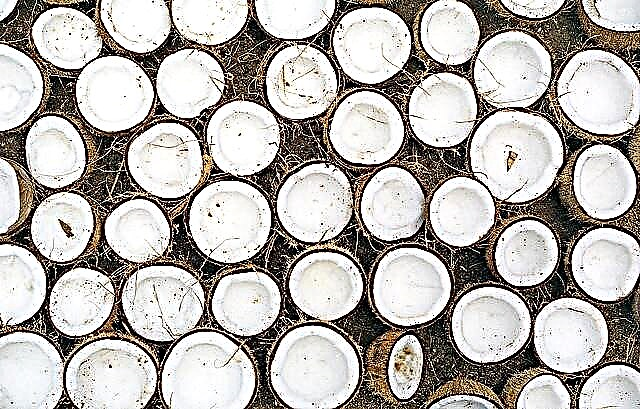The Age of Discovery brought Portugal power and influence on the European continent. Thanks to the new colonies, it was here that new goods, labor and jewelry began to arrive in large quantities. The country was rapidly growing rich and strengthening its defenses, erecting numerous fortresses. Before that, in the 7th-10th centuries, many military conflicts were waged on the territory of the country. The conquests of the Moors, the Reconquista and many others have contributed to the history of Portugal.
It was they who gave impetus to the construction of numerous castles and fortresses. Many defensive structures are located throughout the state. There are more than a hundred officially recognized and protected fortresses in Portugal alone. Today, they attract thousands of tourists for their beauty, architectural and historical value.
The most interesting medieval castles in Portugal
List, photos with titles and a short description!
Castle of the moors
The fortress is located near Lisbon. The fortress walls and towers are well preserved. According to various assumptions, the castle was built in the 9th or 10th centuries. It was erected by the Moors during their conquests in the Iberian Peninsula. In the course of subsequent wars, he changed hands many times, from Muslims to Christians. At the beginning of the 19th century, the fortress was destroyed and rebuilt.

Castle of Saint George
The castle was erected on a hill in the historic center of Lisbon. The whole city can be seen from here. The fortress was captured many times and changed owners. Here were the residences of the Crusaders, Moorish emirs, Romans and Visigoths. And in a later period, until the 16th century, the castle was the residence of the king of Portugal. Towers, walls and some other buildings have survived to this day.

Monsaras
It was erected in the XIII century for protection from Spain. In 1232, the king of Portugal presented the castle to the Knights Templar in gratitude for the military support. After the collapse of the Order of the Crusaders, Monsarash was given to the Order of Christ. A large-scale restoration was carried out under his leadership. In the 19th century, the district center was moved to a village far from the castle. Monsaras lost its significance and was abandoned. The walls, towers and peaceful buildings inside the fortress have been preserved.

Obidos
Afonso I the Great founded a fortress on the site of an old Roman and Visigothic fortification to fight the Arabs. Due to its proximity to Lisbon, the fortress became popular among the Portuguese nobility. An earthquake in the middle of the 18th century damaged the castle, after which it began to fall into desolation. Walls, towers, bastions, inner halls and numerous mosaics have survived to this day.

Guimaraes
The castle was built to protect the nearby monastery from Muslim attacks in 959. Initially, it was just a small keep, surrounded by walls. But in the XIII century Guimaraes was significantly fortified. In the 15th century, the castle became of little importance, so a prison was organized here. Only in the 19th and 20th centuries, Guimaraes was taken under the protection of the state and restored.

Marwan
The fortress was erected on a rock, at an altitude of 865 meters above sea level. There is a village behind the fortress walls. The first settlement here was founded by the Romans, presumably in the 2nd century BC or later. The exact date of the construction of the fortifications is unknown. After the Reconquista, when royal power was established in Portugal, Marwan was regularly strengthened. The castle has been completely preserved to this day and has become a popular attraction.

Tomar
A small town north of Lisbon developed under the protection of the Templar castle. After the disappearance of the Order of the Crusaders, Tomar and the Convent de Cristo Castle passed to the Knights of the Order of Christ. In 1347, the order made the settlement their main residence. Churches and an aqueduct were erected here, the castle was significantly fortified. Since the Middle Ages, the walls, many towers, the church and the inner buildings of the Convent de Cristo have been preserved.

Almourol
Located next to Tomar, on an island on the Tiju River, the castle controls one of the most important waterways in Portugal. The exact date of construction is unknown, but fortifications were built here already in the 1st century. Later, Almourod was rebuilt by the Templars, but in the XIV century it was abandoned. In the 19th century, the castle was restored. And in the middle of the XX century, Almourod became the residence of Salazar. The castle is perfectly preserved, with a picturesque view of the Tiju River from its walls.

Montemor aux Velho
The castle was built in the 8th century, and later a town of the same name arose nearby. Montemore was one of the most important defensive structures of the municipality of Coimbra. The fortress was rebuilt many times, and in the 13th century it became a royal residence. Later, a church was built on the territory of Montemor-o-Velho, which has survived to this day.

Bragança castle
The first fortifications appeared here even before the Roman conquest of the Iberian Peninsula. The Romans used the fort to protect the road that passed nearby. In the 13th century, the first buildings of the castle were given a modern look. The castle has preserved the towers, the donjon and the Princess Tower, where, according to legend, the princess lived, who was waiting for the knight from the campaign.

Torri di Belen
One of the main symbols of Lisbon is located at the mouth of the Tijou River. The Belém Tower was built in 1521 by Francisco de Arruda. The castle is dedicated to the discovery of the sea route to India by the navigator Vasco da Gama. The fortress served as a defensive structure, a powder warehouse, a customs point and a prison. The fortress is made in the traditional Portuguese Manueline style, so thousands of tourists visit the Belém Tower, also because of its architectural value.

Santa Maria da Feira
The castle is located on a hill overlooking the entire Feira Valley. Thanks to this, Santa Maria da Feira remained a military center for a long time. In the 13th century, the first defensive fortifications were built here. In 1251, the fortress became state property. The fortress walls, towers, bastion, chapel and some residential buildings have been preserved on the territory of the castle.

Leiria
The small town on the Lish River was founded during the time when Portugal belonged to the Romans. Later it was captured by the Moors, and from the 12th century a castle was erected here, which became the residence of the Pope in the 15th century. Until the 13th century, the fortress protected the townspeople from the attacks of the Moors, and after that it lost its significance and was preserved as an architectural monument. All the fortifications, castle walls and internal buildings have survived to this day, including the Church of the Lady of Our Pity.

Beja
In 49 year, peace was concluded here between the Lusitanians and the Roman Empire. The first fortifications in the city were built in the 3rd century. The village survived after the capture of Portugal by the Moors, and during the Reconquista it changed hands many times. In the 19th century, the castle suffered serious damage during the invasion of Napoleon and the Lisbon earthquake. The fortress walls, internal buildings, keep and towers have been preserved in good condition.

Castelo di vidi
The castle was built in the 13th century. Due to its strategic position near the border with Castile, Castelo di Vidi was regularly expanded and completed. During the Portuguese War of Independence, in the middle of the 17th century, the castle was most extensively modernized. At the beginning of the 19th century, the castle was destroyed and abandoned, but the walls and fortress towers have survived to this day.

Porto de Mos
The village is located near Leiria. The castle attracts tourists not only for its historical value, but also for its unusual architecture. Tapered tower roofs are rare in Portugal's castles. Like Leiria, Porto de Mos defended itself against the attacks of the Moors. Nowadays, numerous celebrations and excursions are organized in the castle, and the fortifications are regularly restored.

Evora Monte
The castle was built in the 12th century during the Reconquista. After the complete capture of the Iberian Peninsula by Christians, the fortress served to protect the state border of Portugal. Evora Monte was significantly damaged by an earthquake in the 16th century, but due to its importance, the castle was soon rebuilt. By the 19th century, the fortress had lost its need and was empty. Walls, towers and internal buildings have survived to this day.

Alcacer do Sal
In the 8th century, a small settlement was founded and fortified on the Sadu River during the Muslim conquest. Later, in the XII century, a castle was erected here. During the Reconquista, the first king of Portugal, Afonso I the Great, tried to capture the fortress with a detachment of only 60 soldiers, but was defeated and wounded. Here, Muslim uprisings regularly broke out, suppressed by the Catholic order of Santiago. By the 15th century, the castle lost its military significance and became a place of holidays and celebrations.

Arraiolos
The castle of a rare circular layout was built on the hill of St. Peter at the beginning of the 14th century. Due to the constant wind at the top of the hill, life in the fortress was not comfortable. The inhabitants were held in Arraiolos by force, but even with such measures, in the 17th century the castle was completely abandoned. In 1755 it suffered from an earthquake, and during the cholera epidemic in 1833, the fortress became a mass grave. Walls, towers and internal buildings, including the church, have survived to this day.

Mertola
In the 10th century, the first defensive structures were built here. In 1031 the village became independent from the Cordoba Caliphate, but soon Mertola was taken by the ruler of Seville. Later, the castle was repeatedly passed between Muslim rulers. After the Reconquista, Mertola passed to the Order of Santiago. By the 18th century, the castle lost its significance, but in the 19th century the development of the region resumed. The keep, walls, towers and internal buildings have been preserved in the fortress.

Alter do Shan
The Roman fort was built here in the II century, but the modern castle appeared only in the XIV. The fortress changed owners many times from various royal dynasties. During the Portuguese War of Independence, Alter do Shan was captured by Spanish troops. In the XX century, the castle was sold to private hands. The fortress walls and towers, the donjon, the commandant's house and other buildings have survived to this day.

Silves
The castle was built during the capture of Portugal by the Romans. From the VIII century, it was captured by the Moors, and after the Reconquista passed to Portugal. The city and the fortress are of strategic importance due to their location on the shores of the Atlantic Ocean. In front of the entrance to the castle, there is a statue of Afonso III, who became famous in the wars with the Moors. The ruins of internal buildings, towers and walls have been preserved on the territory of the fortress.

Sabugal
The castle is located in the eastern part of Portugal and was founded after the Reconquista. It was of strategic importance due to its proximity to the border with Spain, but was soon abandoned and destroyed. Some residential buildings, fortress walls and towers have been preserved here. Most of them are in a dilapidated state, but there are also reconstructed ones, for example, the local church.

Palmela
The first fortifications were built here in the 4th century BC, under the guidance of Roman architects. Later, Visigoths and Moors settled here, and after the Reconquista - Christians. Most of the buildings were rebuilt by Christian architects in the 12th century, after which the castle was handed over to the Order of Santiago. Due to its strategic location near Lisbon, Palmela has survived to this day in excellent condition.

Castelo Rodrigo
The castle is one of the oldest in Portugal. Presumably, it was founded in the 5th century BC. From the 5th century to the period of the Reconquista, there is little evidence of the fortress's fate. After the 13th century, Castelo Rodrigo was used in the internecine wars and the Portuguese War of Independence. Most of the buildings have survived to this day in ruins.

Serpa
The first fort was built here by the Romans. Later, the building was fortified by Muslims. During the Reconquista, Serpa passed from Muslims to Christians several times. And after the establishment of peace on the peninsula, he was transferred to the Avis Order. Also, the fortress was actively used during feudal fragmentation and internecine wars. The towers, aqueduct, barbican and internal buildings have been preserved here.

Abrantish
The city was founded in the XII century, and during the Reconquista a castle was erected. Abrantes is located next to the Tagus River, one of the main trade routes in Portugal. It was most actively used during the period of fragmentation and during the War of Independence. Due to its strategic location, the castle has been kept in good condition. Fortress walls, towers and internal buildings have survived to this day.

Owren
The castle was built on the site of a Moorish fortress in the 12th century. Ouren is considered one of the most beautiful castles in Portugal, although it is not popular with tourists. After the Reconquista, the castle was transferred to the Catholic Church, and in the 16th century it became a royal residence. The old castle is the best preserved, and the building of the king's residence is in disrepair. Gardens are laid out on the territory of the fortress, picturesque views of the valley open from the walls.

Almeida Walled City
After the end of the Reconquista, the castle was reconstructed. Later, Almeida became a stronghold for Portuguese attacks on the territory of neighboring Castile. The fortress was expanded during the War of Independence. And during the Pyrenean Wars, Almeida was destroyed by the explosion of a powder warehouse. The ruins and medieval castle walls have survived to this day.

Walled city of Elvas
Muslims began building fortifications here. In the 8th century, the first fortress walls were erected. Since the 13th century, Elvas has been regularly modernized and completed, and in the 18th century the construction of the bastion was completed here. The system of forts in Elvas is one of the largest in the world. There are two main forts to the north and south of the main bastion, but there are many more fortified structures around the castle. The walls of the bastion, internal buildings and forts of Elvas are perfectly preserved.












